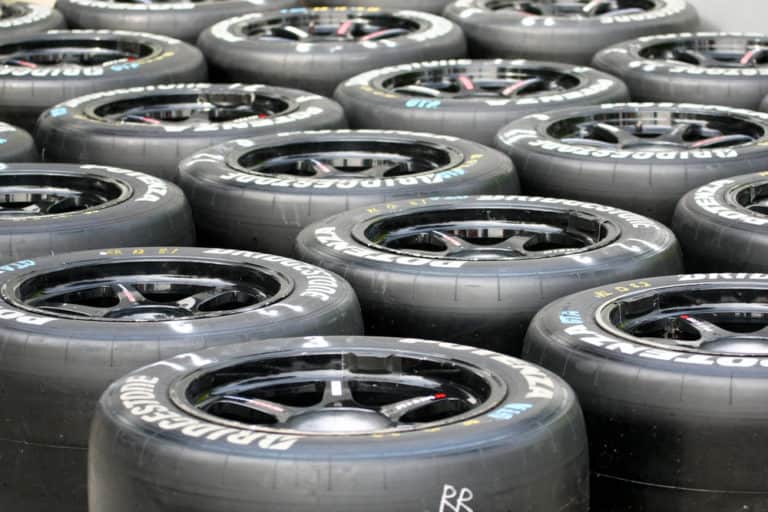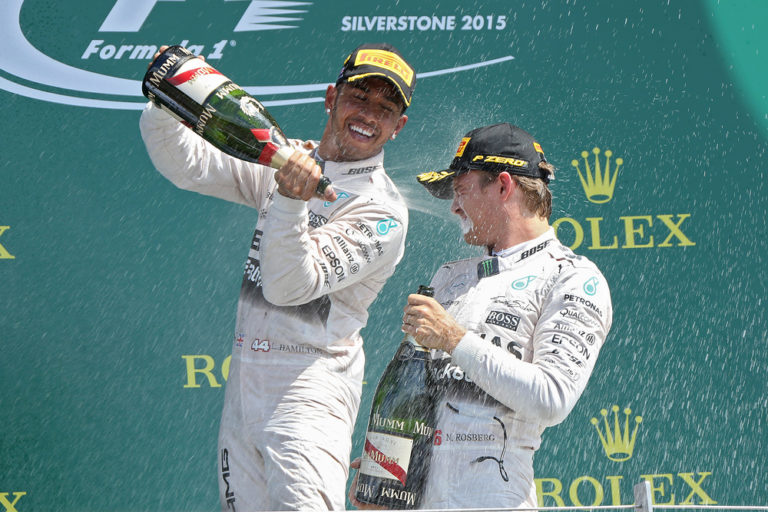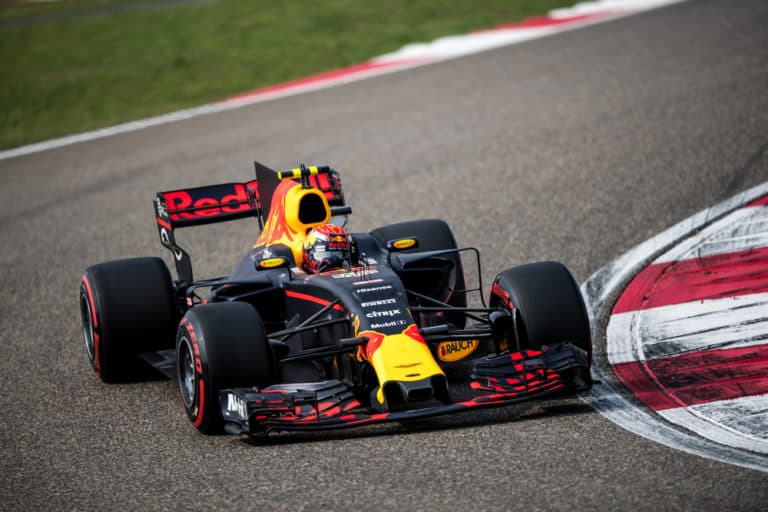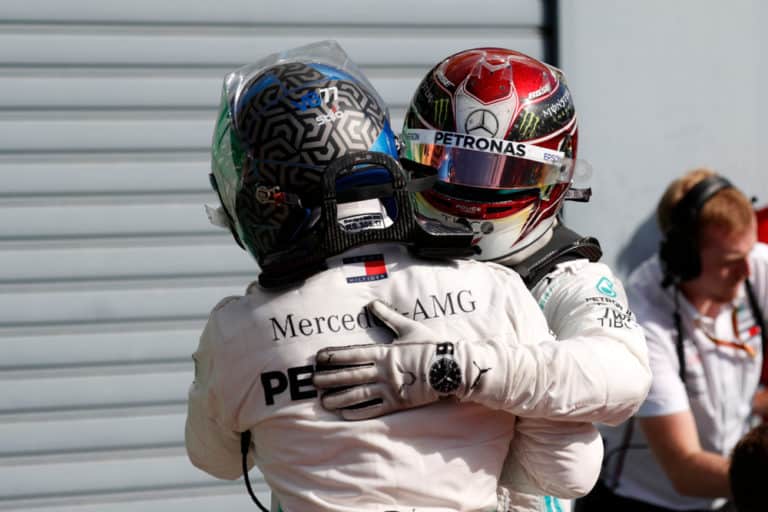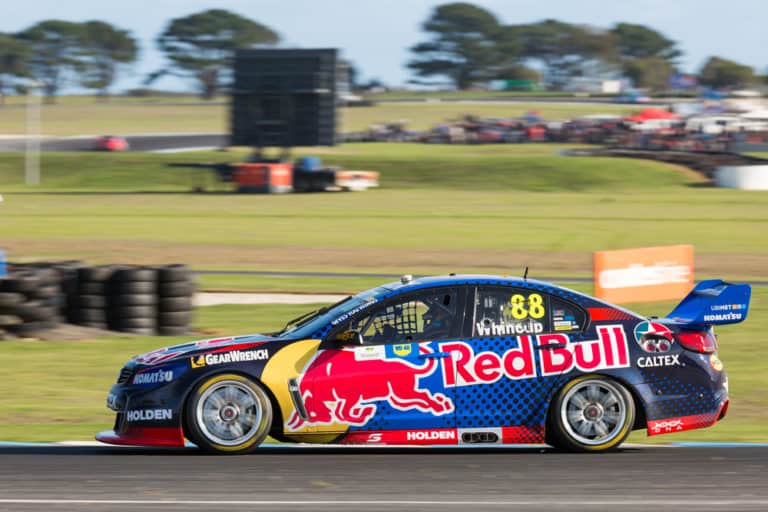Weekends and especially Sundays see 445 million fans shut out the rest of the world and glue their eyes to the TV to watch the current F1 race. That’s aside from those lucky enough to watch the action live at the track. The roaring engines, screeching tires, and palpable excitement has everyone on the edge of their couches. How many F1 Teams are there, and which one will win this time?
Currently, ten F1 teams are competing for the 2022 Championship: Red Bull, Ferrari, Mercedes, McLaren, Alpine, Alfa Romeo, Haas F1 Team, AlphaTauri, Aston Martin, and Williams. The number of teams is limited to thirteen as the rules only allow twenty-six drivers on the track during a race.
Have you ever wondered why it’s called Formula 1? The word “formula” refers to a strict set of standards that all drivers and cars in the race must meet. The FIA or Fédération Internationale de l’Automobile is the world governing body for Formula 1.
If you’re looking for some F1 merchandise, check out the awesome stuff at the official F1 store here.
How Many Formula 1 Teams Are There?
Although the first driver to pass the chequered flag is usually the hero, nothing happens without the team, which can consist of 300-1200 people. That’s a massive engine! It could take 3000 – 12 000 people with ten teams to coordinate every F1 race. It’s mind-boggling!
The annual F1 season spans over 19 -23 Grand Prix races in different locations worldwide. The teams compete for two championships: the Drivers’ Championship and the Constructors’ Championship.
Who Makes Up Each F1 Team?
The team is a monster machine with people dedicated to every intricate detail. Before the driver even gets ready for practice on a Friday, hundreds of people have been working round the clock to prepare the car for that moment and the weekend’s coming events. So, besides the famous drivers, who are the unsung heroes that support them?
The F1 Team Principal
The team principals are in charge of everything from the action at the track to the factory. They are embroiled in sports politics and must often engage in the highest level of negotiations with race organizers and the FIA. Every buck stops with the principals unless the owners feel the need to interfere. Let’s leave it there, shall we?
Team principals must have strong leadership skills and a range of personality traits to succeed in this role. They need fierce determination, 150% commitment, endless patience, people skills, and a smidgeon of trickery.
The F1 Technical Director
The technical director’s vision and power can be the source of a team’s strength. Those with exceptional talent can pull in multimillion-dollar salaries.
His job is a combination of overseeing the car’s development at factory level and managing the operations at the circuit. Spending enough time on each aspect of his responsibilities is crucial for success.
The technical director is deeply involved in the early stages of the car’s development. He makes the final technical decisions with input from all the experts in the various departments.
The Traveling Team
Some call F1 the traveling circus because of the vast number of people who travel from Grand Prix to Grand Prix to set up and run the great show.
The two drivers and their support system of around 75 people form the race team. The support team comprises people who set up the show and others who repair the car. Some are there to analyze race data.
The head of race engineering is in charge of the technical side, along with some other heads of departments.
The sporting director manages the racing aspect.
Each driver has their own head mechanic who is entirely responsible for the car and the mechanics reporting to him, whether in the garage or on the grid getting ready for the race.
Data analysts and strategy teams in the garage send live track data to another group back at the factory.
The traveling team also usually has a test and reserve driver working the simulator to get extra practice besides those hours spent in real-time sessions.
Besides all the people focusing on the car, many others are involved in organizing and running the show at the paddock and working with guests and VIPS throughout the weekend. This is the track team.
The track team comprises many sub-teams that take care of catering, security, and on-track marketing, to name a few. The communications director leads the marketing team, and each driver will have a press officer. Drivers also have their own assistants, often their trainers, who see to their fitness, diet, and health. Some also have life coaches.
The Factory Team
The team headquarters is far larger than the track team and is home to some of the brightest engineering minds of our time. The director of engineering leads the design office, which envisions, develops, and designs the F1 car. It is also responsible for specific tests, such as CFD, wind tunnel running, and computational stress analysis.
A whole team of people is dedicated to running, maintaining, and operating the wind tunnel. Another group is responsible for the simulator, consisting of multiple software engineers testing and working on programs the engineers need the drivers to go through.
A fully functional manufacturing facility works all year round to produce car parts. The factory manager runs the floor with various teams of technical staff.
Aside from the manufacturing staff, there are also test engineers and operators and those involved in the latest materials analysis, environmental vibration, and modal analysis.
The race bay team consists of mechanics that work on the cars off-site after the race. They strip them, clean them up, and replace the necessary parts.
Non-Performance Departments
The non-performance departments are some that don’t have much to do with the race itself, but they keep the gargantuan F1 teams well-oiled. One of the most vital sections is the commercial department, responsible for sponsorship deals that make it possible for the teams to compete in the most expensive sport in the world.
Logistics teams shoulder the mammoth task of managing the team’s travel plans and documents and moving the cars from place to place.
The hospitality departments ensure that everything runs according to plan in the paddock. The needs of the VIPs, partners, and guests must be fully satisfied, and the team must ensure a top-quality experience, as befits an F1 team.
The communications director leads a team of creatives to portray the brand and tell the story according to the team’s preference. Staff members range from social media optimizers and advisors to video producers. Sometimes teams are created to focus on seemingly minor topics to portray the brand as a professional team.
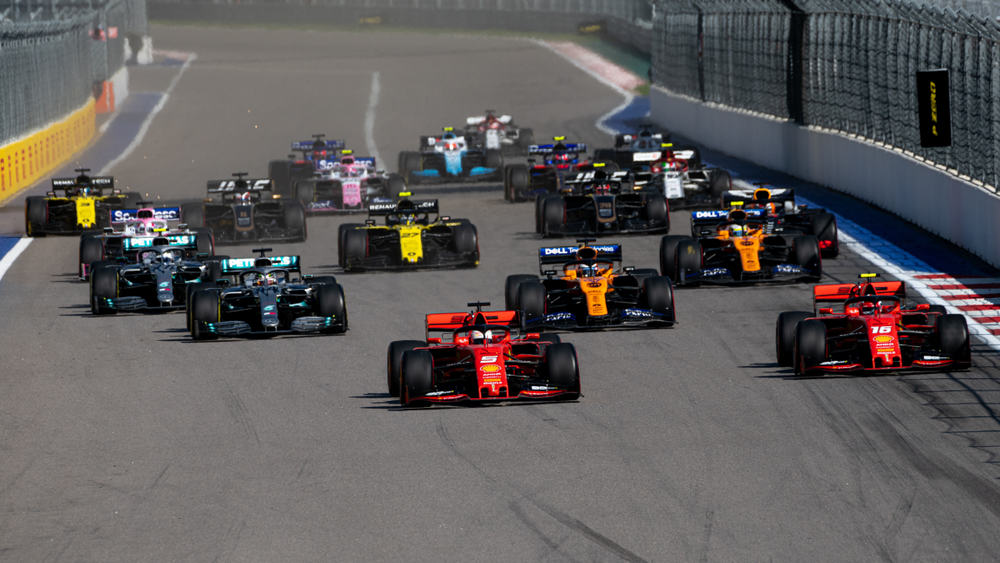
The Current F1 Teams
While the breakdown of the teams may not have been wildly exciting, it is only fair to give credit to the multitudes of people who work tirelessly behind the scenes to make the drivers and the cars look good. But now, let’s discover who the major players are in this exhilarating, adrenaline-rushing sport.
Oracle Red Bull Racing
Team principal Christian Horner is in his seventeenth year of leading the team since its establishment in 2005. With his technical chief Pierre Waché, he has led his team to four constructors’ championship victories and five drivers’ championship wins.
Red bull has grabbed 77 pole positions, 81 fastest laps, and 82 race victories.
The drivers for Red Bull Racing are Max Verstappen and Sergio Perez. Verstappen certainly seems to be a boy wonder, competing for the first time at the age of 17 and snatching his first drivers’ championship win from the legendary Lewis Hamilton at 24 years old.
The Mexican Sergio Perez is a gutsy driver, often proving his ability to fight his way through the pack to the podium and the points. He’s an analytical, strategic driver and a dedicated team player.
Scuderia Ferrari
Even non-fans of Formula 1 racing know that Ferrari is the oldest team in the sport’s history. Mattia Binotto is the Ferrari principal running the team with technical chief Enrico Cardile. Ferrari has taken part in F1 since the first championship in 1950.
Over the years, the team has taken 16 constructors’ championships, and 15 drivers’ championship wins. The iconic Michael Schumacher took five consecutive drivers’ victories at the peak of his career.
Over the decades, the Italian team has earned 237 pole positions, 257 fastest laps, and 243 race victories.
Nowadays, drivers Charles Leclerc and Carlos Sainz represent the legendary team. Monte Carlo-born Leclerc joined Ferrari in 2019 to fill the massive shoes of Kimi Raikkonen. He wasn’t afraid to take on the number one driver, Sebastian Vettel, and soon out-scored him.
Spaniard, Carlos Sainz is a tenacious and intuitive racer, methodically moving through the ranks of F1. Twice he has replaced big-named drivers. First, he replaced Fernando Alonso at McLaren, and then he took Sebastian Vettel’s position at Ferrari.
Mercedes-AMG Petronas F1 Team
The Mercedes team has been a dominant force in F1 over the last decade. With Toto Wolff at the helm and supported by technical chief Mike Elliot, Mercedes has risen to new heights, winning eight consecutive constructors’ championships since 2014.
They have also won nine drivers’ championships over the years, seven belonging to the almost unbeatable Lewis Hamilton. The Brit took seven consecutive wins from 2014 to 2020. He almost had his eighth victory in the bag when Max Verstappen very controversially snatched it out from under him.
Hamilton’s teammate and countryman, George Russell, only moved to Mercedes at the beginning of the 2022 season. Mercedes scooped him up because of his tenacity, talent, and hard work. He is undoubtedly one to watch out for in the coming years.
McLaren F1 Team
McLaren is based in Woking, UK. German engineer Andreas Seidl is the current team boss, working closely with the technical chief James Key.
Although they have been the third most successful team in the history of formula 1, it has been a while since the team won any championships. But they have taken eight constructors’ titles and 12 driver victories over the years. They also had 183 wins and 156 pole positions.
In 2021 drivers Daniel Ricciardo and Lando Norris took the season’s only first-second result at Monza, a great morale booster for the team.
BWT Alpine F1 Team
Alpine is a UK-based team led by Otmar Szafnauer and the technical chief, Pat Fry. Alpine first entered a team in 1986 and has won two constructors’ championships.
Their drivers are Spanish-born Fernando Alonso and Frenchman Esteban Ocon. Alonso has 347 Grand Prix races under the belt, with 98 podiums and 32 race victories in his F1 career.
After struggling to land a solid position in an F1 team and a year of acting as reserve driver for Mercedes, Ocon took up an offer to race for Renault in 2020 (who became Alpine the following year) and scored his first race victory. He has been on the podium twice so far.
Alfa Romeo F1 Team Orlen
Alfa Romeo first entered F1 in 1993 and has had one race victory. Frédéric Vasseur is the current team boss, and Jean Monchaux heads up the technical team.
Alfa Romeo has earned one pole position, five fastest laps, and one race victory.
The two drivers fighting to win more victories for the team are Valterri Bottas and Zhou Guanyu.
Valterri Bottas is a force to be reckoned with, as 67 of his 189 races ended with a position on the podium. He has also had ten race victories in his career.
Zhou Guanyu is China’s first ever F1 racer, a dream come true after watching his childhood hero, Fernando Alonso. Now he competes against him! Zhou’s many wins and pole positions in Formula 2 drew Vasseur’s attention, leading him to sign the young Chinese driver for the 2022 season.
Haas F1 Team
Haas is a newcomer to F1, having first entered a championship in 2016. Charismatic Guenther Steiner is the team principal, and his technical chief is Simone Resta. The Haas team calls Kannapolis, North Carolina, their home base.
Haas has earned itself four race victories and two fastest laps in its short life. The drivers are still chasing those pole positions and other podium positions.
Speaking of drivers, both Haas drivers are second-generation F1 racers. Mick Schumacher is the offspring of the legendary Michael Schumacher, who had seven world titles to his name. Mick may have the Schumacher name, but he got to F1 on his own merits. Haas is Mick’s first F1 team position, and he earned his stripes by winning F3 and F2 championships before being signed by Steiner.
Kevin Magnussen was also born into the F1 culture, with his father, Jan Magnussen racing for the McLaren and Stewart teams during his career. Kevin has much more experience than the younger German driver, having entered 131 races in his career. He is still chasing that elusive first position but has earned the team a second place on the podium and is the first Dane to do so.
Scuderia AlphaTauri
AlphaTauri was founded in 2006 as a squad where Red Bull’s young talent could start their racing careers. The team was originally known as Toro Rosso.
AlphaTauri has its home base in Faenza, Italy. Team principal Franz Tost has led the team since its inception with the aid of technical chief Jody Eggington.
The team has had two race victories, one pole position, and two fastest laps.
AlphaTauri has two young drivers: Frenchman Pierre Gasly and Japanese Yuki Tsunoda. Pierre has entered 97 Grand Prix in his career, earning three podiums, one of which was race victory.
Yuki Tsunoda started in F3 and finished third in the F2 championship, proving he had the speed and skill to compete with major F1 players.
Aston Martin Aramco Cognizant F1 Team
Yes, that is a mouthful, but fortunately, it’s acceptable to refer to the team as Aston Martin simply! Although the team’s first entry was in 2018, they are no strangers to the Grand Prix circuits, as they previously raced under the names Jordan and Racing Point.
Mike Krack takes the leading role as team principal, while Andrew Green is the technical boss.
Although the team has not yet taken a world championship, they have one race victory and a single pole position to their names so far.
But things are bound to take an upward t with four-time world champion Sebastian Vettel driving for Aston Martin. He has won 53 races and been on the podium 122 times in his career.
Lance Stroll is Aston Martin’s other driver and the son of Lawrence Stroll, part-owner of the Aston Martin team. Lance has earned the team three third positions. He has great talent and has perfected wet-weather driving.
Williams Racing
Although they took their last victories in 1997, William is the second most successful team in F1 history. They have won nine constructors’ and seven drivers’ titles since their first entry in 1978.
The UK-based team dominated in the 1990s, winning five constructors’ championships in six seasons, with four different drivers winning those drivers’ championships.
Williams employed many epic drivers during that era, including Nigel Mansell, Alain Prost, Jacques Villeneuve, and Damon Hill. The dynamo that was Ayrton Senna also drove three races for Williams before his tragic death at the Imola track. Despite the tragedy, Williams still took the 1994 title.
German team principal Jost Capito had a short four-month spell at McLaren before joining the Williams team in 2020 as CEO. June 2021 saw him take the team boss role. Technical chief Francois-Xavier Demaison takes responsibility for designing and developing the Williams cars and all engineering at the track.
The team’s current drivers are Canadian Nicholas Latifi and English Alexander Albon. The drivers have a similar level of experience, with Latifi having entered 50 Grand Prix and Albon 49.
Why Are There Only Ten Teams?
As previously mentioned, thirteen teams are allowed to enter Formula 1, but there are only ten now. What is stopping other constructors from finding their place on the grid?
The Concorde Agreement has a new rule that states any new team entering F1 has to pay a $200 million fee that will be shared equally amongst the ten existing teams. The purpose is to make the sport more sustainable for existing teams and bolster their commercial value.
Previously new F1 teams made enhanced payments on joining, which were paid back to them over time, almost like a deposit. The inflated fee going to the teams serves as a deterrent for teams entering F1 without ever making it to the track.
Current teams also pay exorbitant entry fees for each season. For the 2022 season, the constructors’ champions paid $577278 as a basic entry fee and $6926 for every point gained. Other teams forked out the same entry fee plus $5770 per point scored. When you look at the fees, you understand why it’s the most expensive sport in the world.
Changes To F1 In 2022
Formula 1 is anything but staid and boring, and some sweeping changes have hit the sport this season.
- Michael Masi has been replaced by Niels Wittich and Eduardo Freitas, who alternate as race director. They now have the added benefit of a new video reviewing system. This comes in the wake of Masi’s controversial decision regarding the safety car rules at Abu Dhabi, which lost Hamilton the title to Verstappen.
- All teams have redesigned cars based on new regulations.
- Teams now use 18-inch tires for better grip on the track and less wear and degradation.
- Three Grand Prix will run short sprints on the Saturday prior to the race. The top eight teams will receive points.
- The organization has placed spending limits of $140 million on teams, and this amount will drop each season.
Conclusion
The massive machine that is the F1 sport denies its size when we say there are only ten teams. Those teams are enormous, employing hundreds or thousands of people in myriad positions to keep their cars on track.
Next time you’re glued to your seat and sweating blood while watching the Grand Prix, you will have a new appreciation for those behind the scenes to get your hero driver revving his engine at the start line.
References
- https://www.formula1.com/en/teams.html
- https://en.wikipedia.org/wiki/Formula_One
- https://www.statista.com/statistics/480129/cable-or-broadcast-tv-networks-formula-one-f1-racing-watched-within-the-last-12-months-usa/
- https://the-race.com/formula-1/new-f1-squads-must-now-pay-existing-teams-200m-to-enter/
- https://en.wikipedia.org/wiki/List_of_Formula_One_constructors
- https://www.sbnation.com/2022/3/17/22978957/f1-season-2022-preview-drivers-teams-schedule-rule-changes-tv-schedule-lewis-hamilton-max-verstappen
- https://www.tutorialspoint.com/formula_one/formula_one_quick_guide.htm
- https://www.motorsport.com/f1/news/insiders-guide-f1-team-who-does-what/8025042/
- https://www.autosport.com/f1/news/most-successful-f1-teams-which-team-has-the-most-constructors-titles-5367606/5367606/


